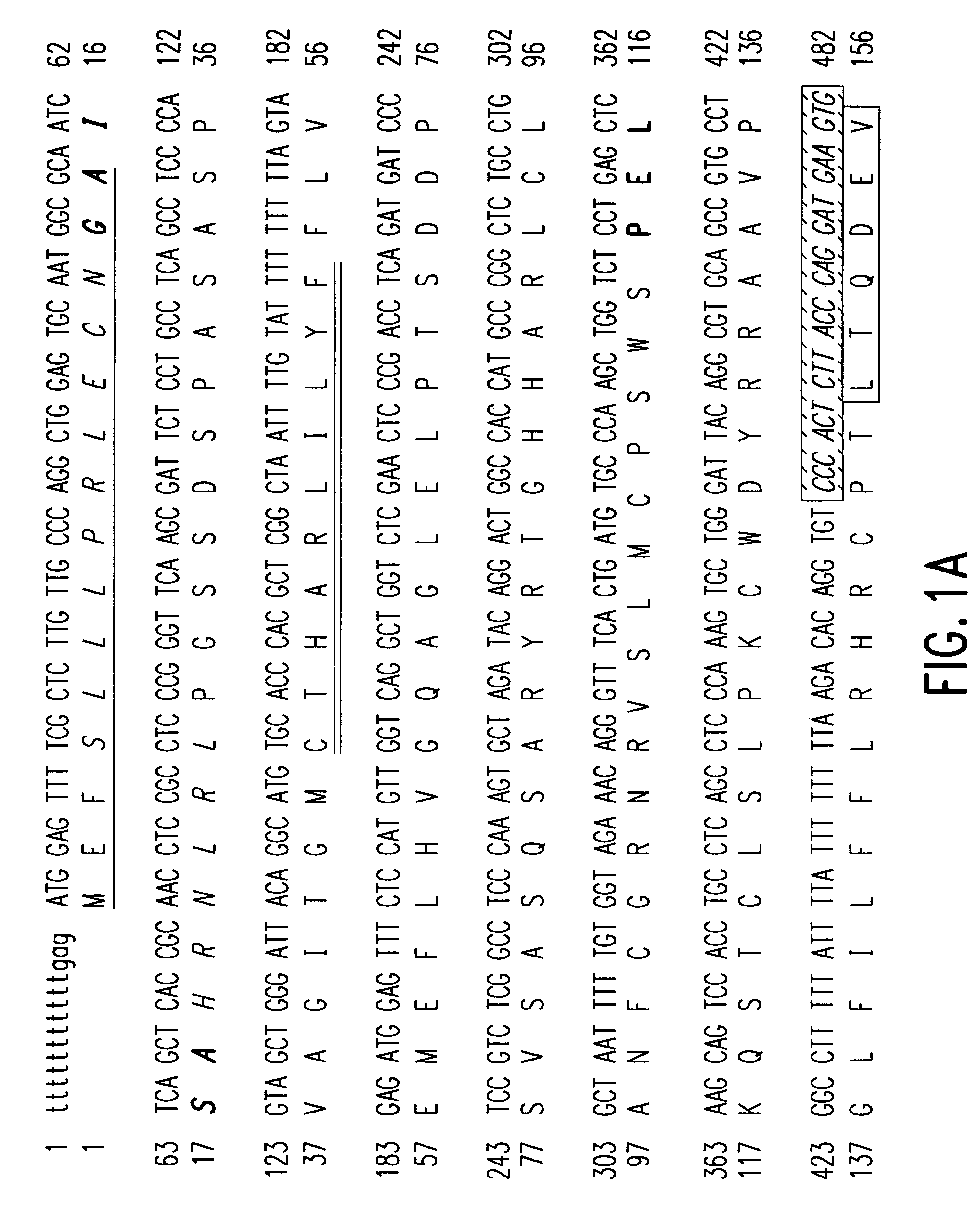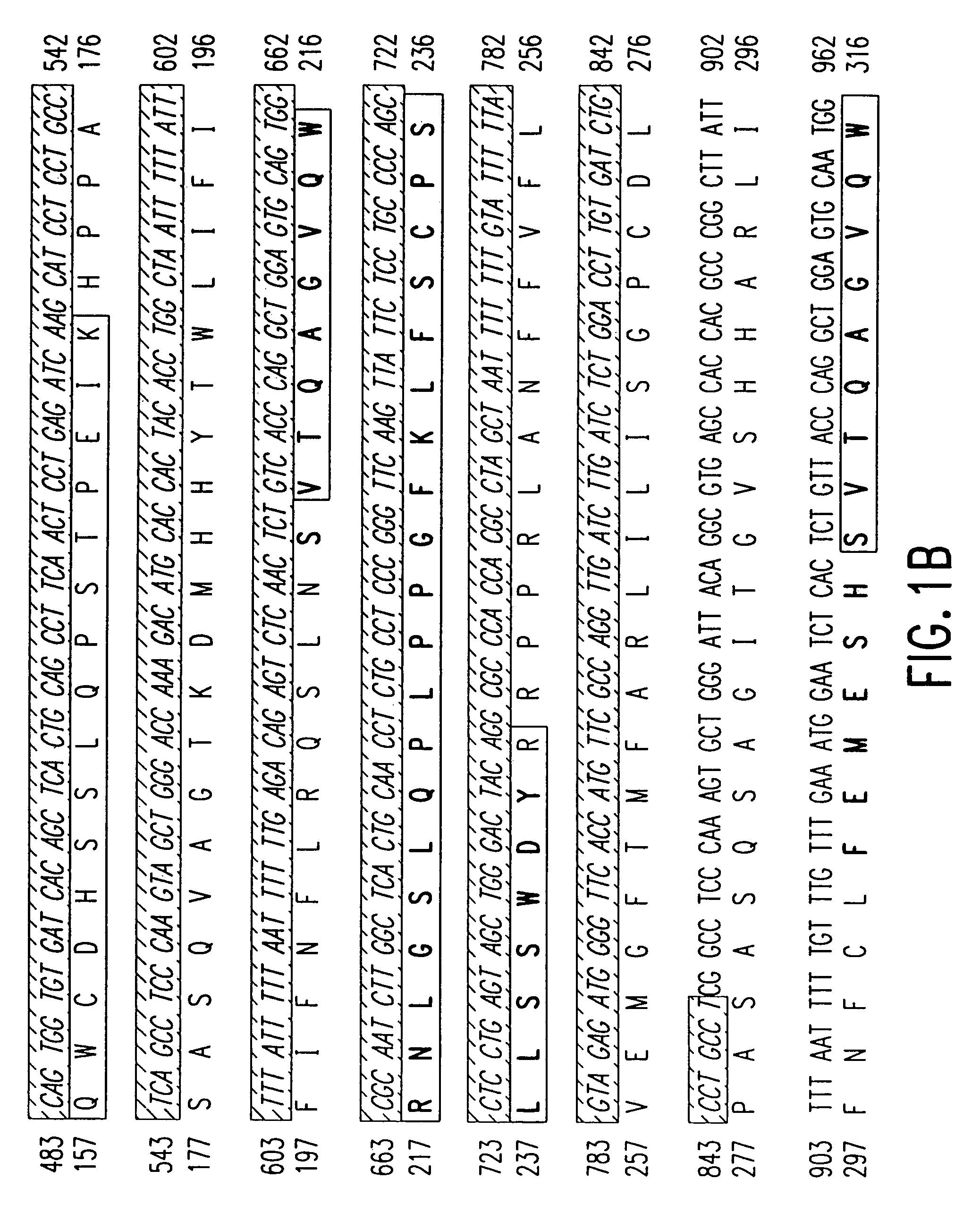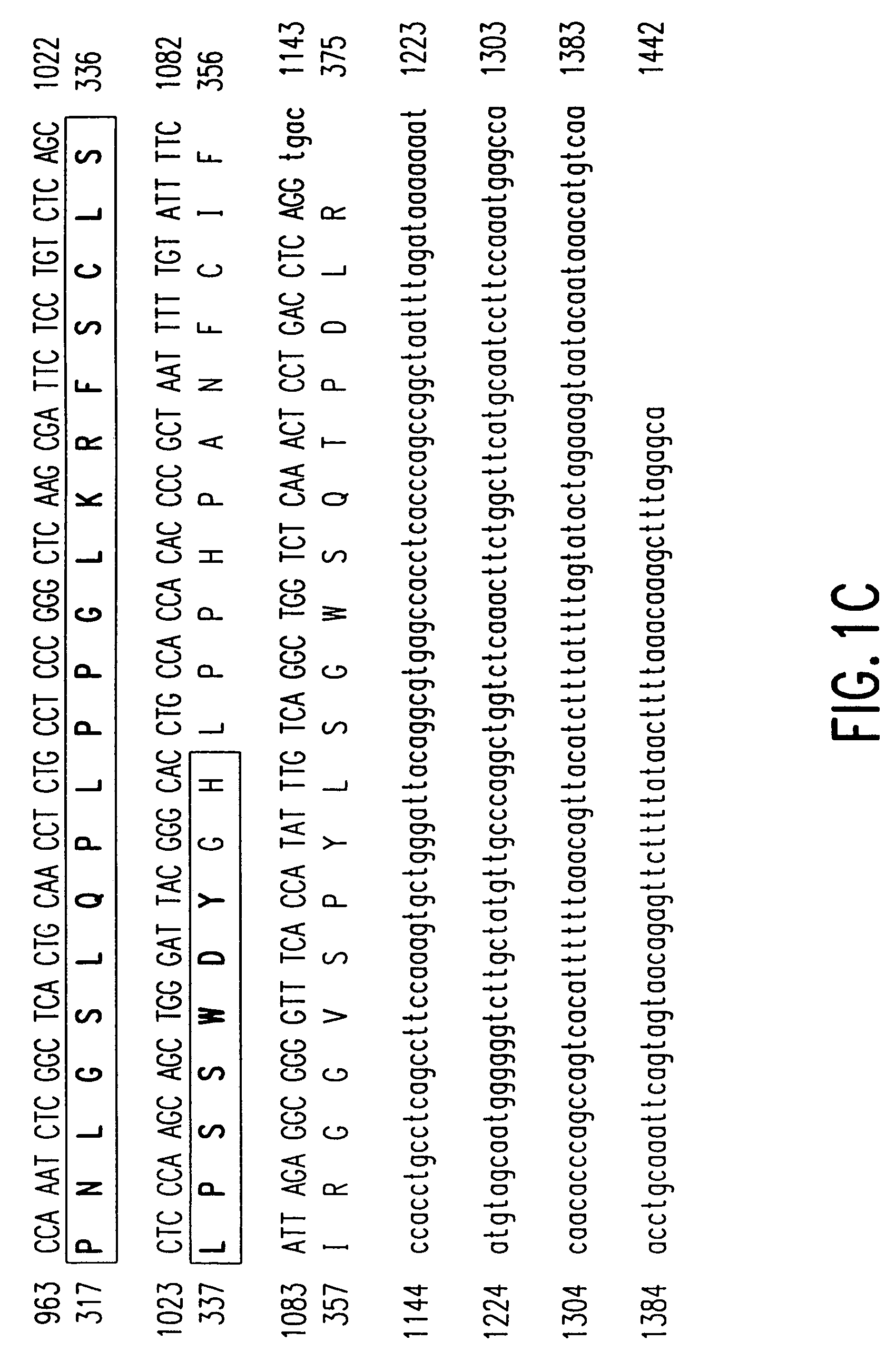Transgenic animals and cell lines for screening drugs effective for the treatment or prevention of Alzheimer's disease
a technology of alzheimer's disease and transgenic animals, applied in the field of gene engineering and molecular biology, can solve problems such as numerous errors in the sequence, and achieve the effect of improving dementia
- Summary
- Abstract
- Description
- Claims
- Application Information
AI Technical Summary
Benefits of technology
Problems solved by technology
Method used
Image
Examples
example 1
Isolation of the AD7c-NTP cDNA
[0117]A cDNA library was prepared commercially (Invitrogen Corp., San Diego, Calif.) using RNA extracted from the temporal lobe of an individual with end-stage AD. The library was ligated into the pcDNA2 vector (InVitrogen). To isolate the AD7c-NTP gene, approximately 5×105 transformed and IPTG induced (Sambrook, J. et al. “Molecular Cloning. A Laboratory Manual,” Cold Spring Harbor Laboratory Press, Cold Spring Harbor, N.Y.) E. coli colonies were screened using polyclonal antibodies to human PTP (Gross, J. et al., “Isolation, Characterization, and Distribution of an Unusual Pancreatic Human Secretory Protein,”J. Clin. Invest. 76:2115–2126 (1985)), followed by radiolabeled anti-human IgG (Amersham, Arlington Heights, Ill.) (Sambrook, J. et al. (1989); and Ausubel, F. M. et al., “Current Protocols in Molecular Biology,” New York, N.Y., John Wiley & Sons (1988)). Restriction endonuclease fragments (XhoI-PstI; PstI-PvuII; PvuII-HindIII) of AD7c-NTP were su...
example 2
In Vitro Expression of AD7c-NTP
[0121]Antisense and sense cRNAs were transcribed from AD7c-NTP cDNA plasmid with KpnI and XhoI, respectively. The cRNA transcripts were translated in a rabbit reticulocyte lysate system (Stratagene, La Jolla, Calif.) in the presence of [35S]methionine (Dupont-New England Nuclear, Boston, Mass.), and the products of in vitro translation were analyzed by SDS-PAGE and autoradiography. The AD7c-NTP cDNA was ligated into the pTrcHis expression vector (Invitrogen Corp., San Diego, Calif.) which encodes a 5 N 6-His Tag sequence used to isolate the fusion protein by metal chelate chromatography. Recombinant fusion protein induction in transformed E. coli was achieved by the addition of 1 mM IPTG during log phase growth. The fusion protein was affinity purified (Ausubel, F. M. et al. (1988)) using ProBond resin (Invitrogen Corp., San Diego, Calif.), and detected by Western blot analysis (Harlow, E. and Lane, D., “Antibodies: A Laboratory Manual,” Cold Spring Ha...
example 3
Generation of Polyclonal and Monoclonal Antibodies to Recombinant AD7c-NTP
[0122]Polyclonal antibodies were generated in rabbits immunized with affinity purified recombinant AD7c-NTP protein. Monoclonal antibodies were generated in Balb / c mice immunized intraperitoneally with 50 μg of purified recombinant AD7c-NTP protein emulsified in complete Freund's adjuvant (Harlow, E. and Lane, D. (1988); and Wands, J. R. and Zurawski, V. R., Jr., “High Affinity Monoclonal Antibodies to Hepatitis B surface Antigen (HBsAg) produced by Somatic Cell Hybrids,”Gastroeneology 80I:225–232 (1981)). The mice were boosted 6 to 10 weeks later, with 10 μg AD7c-NTP by tail vein injection. Spleenocytes were fused with SP-0 myeloma cells (Harlow, E. and Lane, D. (1988) and Wands, J. R. and Zurawski, V. R., Jr. (1981)). The cells were grown in HAT medium, and hybridomas producing anti-AD7c-NTP antibody were identified by solid phase immunoassay (Bellet, D. H. et al., “Sensitive and Specific Assay for Human Cho...
PUM
| Property | Measurement | Unit |
|---|---|---|
| temperature | aaaaa | aaaaa |
| time period | aaaaa | aaaaa |
| weight | aaaaa | aaaaa |
Abstract
Description
Claims
Application Information
 Login to View More
Login to View More - R&D
- Intellectual Property
- Life Sciences
- Materials
- Tech Scout
- Unparalleled Data Quality
- Higher Quality Content
- 60% Fewer Hallucinations
Browse by: Latest US Patents, China's latest patents, Technical Efficacy Thesaurus, Application Domain, Technology Topic, Popular Technical Reports.
© 2025 PatSnap. All rights reserved.Legal|Privacy policy|Modern Slavery Act Transparency Statement|Sitemap|About US| Contact US: help@patsnap.com



